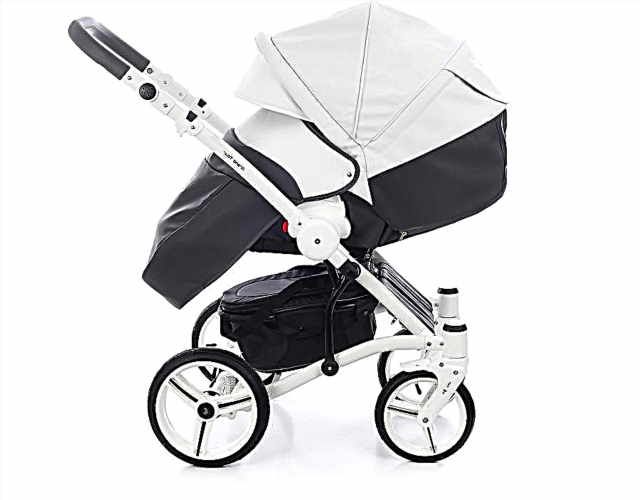
If a patient has a bacterial infection, an antibiotic is often prescribed, but viruses called phages can also be used in the treatment of pathologies caused by pathogenic bacteria.
With their help, drugs are created with a selective effect on certain microorganisms. They contain bacterial phagolysates, that is, purified microbial cells destroyed by phages. One of these drugs is "Pyobacteriophages". They are often included in the treatment of purulent infections, including in children.


Release form and composition
"Pyobacteriophages" are manufactured by the Russian company "Microgen", which also manufactures other immunobiological drugs.
Currently, a bacteriophage with the "pio" prefix is represented by two means:
- "Complex pyobacteriophage";
- "Polyvalent pyobacteriophage Sextaphage".
Both drugs are solutions packaged in sterile 20 ml glass vials. "Complex Pyobacteriophage" is sold in 8 such vials per pack, and is also additionally produced in a larger package (100 ml vials, which are sold in 1 piece). "Sextafag" is presented in packs of 4 and 10 bottles. The solution itself is clear, yellowish or greenish.


The main difference between these two drugs is their composition, in particular, the list of microbes destroyed by bacteriophages, which are the active ingredient of the solution.
In "Sextafag", as the name implies, contains 6 types of microorganisms:
- staphylococci;
- streptococci;
- proteas;
- pathogenic escherichia coli;
- Pseudomonas aeruginosa;
- Klebsiella pneumoniae.
They are also present in the "Complex pyobacteriophage", but this medication additionally contains destroyed enterococci and Klebsiella oxytoca. An auxiliary component of both drugs is 8-hydroxyquinoline sulfate (preservative). The effect of such drugs on the body, the indications for their use and even the dosages are the same, so the information below will refer to both drugs.


Operating principle
The microbes destroyed by the phages, which are in the "Pyobacteriophage", contribute to the destruction of exactly those types and strains of bacteria from which they were obtained.
This means that "Sextafag" affects streptococci and staphylococci, two types of Proteus and Klebsiella pneumonia, as well as E. coli and Pseudomonas aeruginosa. "Complex Pyobacteriophage" is also effective against enterococci and Klebsiella oxytoca.

Indications
The reason to prescribe "Pyobacteriophage" may be:
- otitis media, bronchitis, tonsillitis, rhinitis, tracheitis, sinusitis and other infections of the respiratory system;
- furuncle, felon, abscess and other bacterial infections of the skin, bones and soft tissues;
- purulent complications of skin lesions (burns, wounds, etc.);
- cystitis, urethritis and other bacterial lesions of the urogenital organs;
- purulent eye infections;
- dysbiosis;
- intestinal infection;
- generalized bacterial infections and so on.
The prophylactic use of solutions is in demand for external treatment of skin lesions and stitches after surgery. In addition, drugs are prescribed to prevent nosocomial infection if there is such a risk.
At what age is it prescribed?
It is possible to use "Pyobacteriophage" in children at any age. Such a medication is used even in newborns, for example, for sepsis, pyoderma, conjunctivitis or omphalitis.
However, the drug must be prescribed by a doctor after determining the sensitivity of the pathogen.
Contraindications
Treatment with "Pyobacteriophage" is prohibited if the patient is hypersensitive to any component of the solution. No other contraindications for such drugs are indicated.
Side effects
According to information from the manufacturer, "Pyobacteriophage" does not provoke any side effects. However, in rare cases, after taking the solution, a skin rash or diarrhea may occur, and in infants in the first months of life, regurgitation may occur. These negative symptoms should be reported to your doctor immediately.

Instructions for use
To obtain the desired effect, it is important to follow some rules for using the "Pyobacteriophage".
- Since the medicine is stored in the refrigerator, then before giving it to the baby, you should slightly warm the solution by holding the syringe in your hands or taking the remedy for a while (no more than 1 hour).
- Shake the solution before use and check its transparency. If there is turbidity, the medication should be discarded. To prevent other microbes from entering the bottle, it is best to draw the drug with a syringe, and wipe the cork and hands with alcohol.
- Most often "Pyobacteriophage" is used internally. The remedy is given to the child three or four times a day 1 hour before feedings. The duration of oral administration is from one week to 20 days - the duration of treatment for a particular patient is determined by the doctor.
- If the drug is prescribed to a newborn, then the required dose of the solution is diluted with boiled water 1: 2. In the absence of negative reactions and good tolerance, the drug can be given undiluted after a few days. If the baby refuses to drink "Pyobacteriophage" in its pure form, it is permissible to add a little mother's milk to the medicine.
- In addition to oral administration, the drug is often used in the form of enemas. This method is prescribed for children with enterocolitis, vomiting, regurgitation, sepsis and other problems. Rectal administration of the solution involves a high enema (it is performed through a catheter or using a gas tube). The duration of such treatment is usually 7-10 days.
- "Pyobacteriophages" are also used externally, for example, they make lotions for suppuration of an umbilical wound or irrigate burnt skin. When the conjunctiva is damaged, the agent is dripped into the eyes, with rhinitis and adenoids - into the nose, and with stomatitis and throat lesions, rinses and inhalations are prescribed. Surgeons, if necessary, inject such drugs into cavities, for example, into the joint or into the pleural cavity.
- It is important to know the patient's age to determine a single dosage. The recommended dose for both oral administration and rectal administration is indicated in the table in the instructions for "Pyobacteriophages". For example, infants up to 6 months old need to be given 5 ml of medication inside, and 10 ml of solution is used for an enema.
- For prophylactic use, age-related dosages are used, but the medicine is given only once a day. The duration of such an appointment should be checked with the doctor for each patient separately.
Overdose and drug interactions
There have been no cases of overdose of "Pyobacteriophage" yet. If the dose is exceeded, it is recommended to monitor the patient and use standard measures. The drugs are compatible with any other medications, including antibiotics.
If "Pyobacteriophage" is used externally and the skin is treated with an antiseptic before applying it, then before use it is required to rinse the surface with saline.
Terms of sale and storage
"Pyobacteriophages" are sold without a prescription and are available in most Russian pharmacies. The cost of the drug is affected by the volume of the solution in the bottle and the number of bottles in the pack. For four bottles of "Sextafag" or the same package of "Complex pyobacteriophage" you need to pay about 700 rubles.
To store drugs, a low temperature is required (up to +8 degrees), so the medicine should be kept in the refrigerator at home. The shelf life of both medicines is 2 years. If it has expired, the drug must be discarded, even if the solution is still clear.

Reviews
You can see a lot of good reviews about the use of "Pyobacteriophages" in children. In them, parents confirm the effectiveness of solutions for infection with staphylococcus, Escherichia coli and other microbes. The advantages of the drugs include the ability to treat children of any age, good tolerance and ease of dosing.
Among the shortcomings, a high price is usually mentioned, and in some reviews there are complaints about the lack of effect. In addition, when taken orally, many people note the unpleasant taste of the medicine, and it can be difficult to give an enema to a baby.
Analogs
Other drugs based on phagolysates can replace "Pyobacteriophage". After determining the type of pathogen, the child can be assigned staphylococcal, Pseudomonas aeruginosa, dysentery, intestines, coli and other bacteriophages.


More information about bacteriophages is in the video below.



